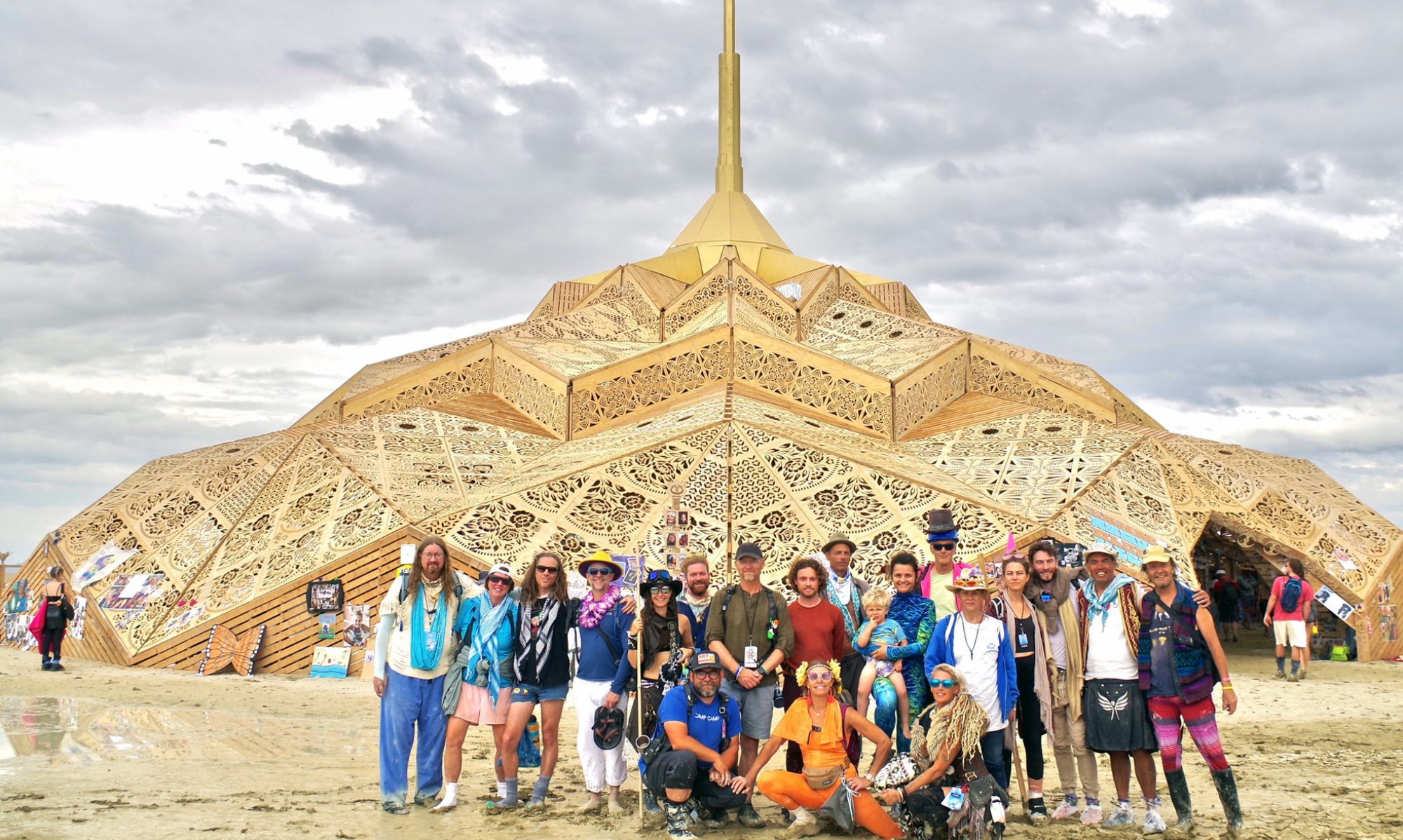The Temple is the soul of Burning Man. Rising from Black Rock City’s 12 o’clock, standing by itself, it faces the Man and beckons participants to take a respite within its walls from the revels of the event all around it.
Artist David Best first constructed the Temple in 2000 to commemorate the death of a friend who had passed away in a motorcycle accident en route to Burning Man. The next year and the years that followed, the Temple became larger and embraced all of humanity.
The Temples have meant different things to different people through the years. Some people have a strong spiritual connection with it, others use it as a place of contemplation, a place to rest, a place of reflection, a place of rituals, weddings, reunions, etc.
The Temple has inspired its own tradition. Many write letters to the departed, themselves, no one, or everyone, or express the otherwise inexpressible by bringing an object or offering to burn on Sunday night of Burning Man.
Those who participate in this tradition often find that it works as a spiritual cleansing, a liberator of the mind, and a psychological release. What is for certain is that the Temple always stirs awe and inspiration. Even if you don’t connect to it spiritually, it is a magnificent piece of art and highly revered as such.
For more information about the history and tradition behind the Black City Temple, please see “Spirituality and Community: The Process and Intention of bringing a Temple to Black Rock City” by John Mosbaugh (aka Moze).

